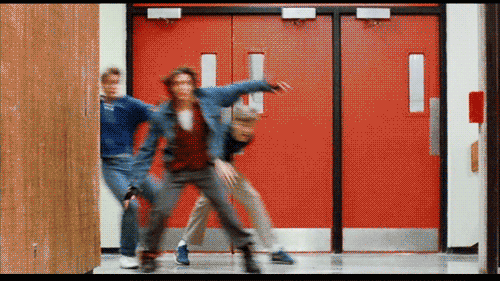In last month’s
installment of this novel planning series, I moved onto story structure,
discussing the big-picture methods I find most useful. I work through each,
ending with a handful of major plot points. This is a great way to start. But
then I delve deep. Like oil drilling deep.
Because my
ultimate goal is to create a scene-by-scene beat sheet, which incidentally, is
why this series started where it did.
When I began, I
assumed you had your kernel that you’d popped into three disasters because you
can’t plot a novel if you don’t have an idea! But before we could get to
structure and beat sheets, we needed to go through the steps: writing exercises, inside and outside story, characters profiles and the wound and a want,
and setting.
With all these
elements in place, we can fill in that beat sheet, right?
Not quite.
Because we now
need to start thinking about the smaller picture. To ease us into this idea of
breaking down our bigger plot points into bite-size scenes, I want to share an
analogy that hit home for me: the laundry line.
Picture a wide
open space, green grass on the ground, puffy white clouds in the sky. The sun
is shining down on a backyard clothesline. One tall pole staked in the dirt on
one side, a matching one on the other, and a long, straight rope in between.
Think of the
first pole as your opening scene. Think of the second as your ending scene. And
the rope is your story. Start “hanging” your plot points on the laundry line.
Your inciting incident goes somewhere very close to that first pole. Your first
“disaster” goes 20%-25% of the way in. Your midpoint dangles at 50% and your
third at 75%. Do you have a climax yet? If so, stick a pin on that line at
85%-90%.
Step back and
take a look. Start thinking about how you get from each element to the next.
Think about the characters you’ve fully developed by doing character profiles.
Think about the setting that you’ve placed these characters in. Think about
their wounds and their wants that form the inside and outside story. Think
about the points introduced last month like Story Engineering’s “pinch points”
and the fifteen Save the Cat beats. Put all that hard work you’ve done so far
to use by figuring out what additional big scenes you need to get the story to
work, to go from disaster to disaster.
Start hanging
them on that line and stringing them together. And don’t worry, you can move
them around. But get them up there so you can see them. If a small scene comes
to you, great, get it up there too. But for now, concentrate on the bigger
milestones. We’ll get to the small ones next.
This is a great
way to, literally, visualize your story taking shape. You can do this by hand
on a long scroll of paper (rice paper or butcher paper works well); with
physical index cards; with online programs like Scrivener. There are even apps
for smartphones that mimic index cards. Or you can list them in outline form in
a notebook or in a Word file. Do whatever works for you.
I’m a bit old
school and I like the index card method. I sit at my dining room table and
start filling out card by card and arranging them in a row. Standing there,
watching my idea actually become a story is exciting and fulfilling — a reward
for all the effort I’ve put in just “thinking.” But that thinking is why this clothesline
method works as well as it does. I find once I start writing scenes on those
cards, my hand can’t write fast enough. I’ve internalized who my characters are
and where this story is going. The physical writing of one scene sparks my
brain to move to the next and the next. When I get stuck, I do some laps around
the house.
Free-Write Synopsis
Let me deviate
here for a second, because there’s another technique I use right about this
same time: I “free write” a long synopsis. Not one of those one- or two-page
synopses we all dread. This is for my eyes only, which takes the pressure off.
In truth, the order here varies. Sometimes I take my hook, my three disasters,
all my other prep work on characters, etc., and dive right into this synopsis.
Other times I wait and do the laundry line/index cards first. I can also be
writing this simultaneously while working on the index cards. Figure out what
works best for you, and like me, that may change from story to story.
In order to
create this synopsis, I take the plot points and bigger picture scenes I have
so far and simply write — anywhere from five to fifteen pages. I write down the
opening image (which I decided on when I worked through last month’s Save the
Cat method), expanding on it, sometimes even writing a very short scene with
dialogue. I then plug in each plot point I have so far and start writing between
them. It’s almost a stream-of-consciousness type of writing. I let my mind
wander, and the synopsis is often full of questions. Would the character do
this or that? If she does this, then later, what about that other thing? I
don’t worry about answering these questions. I don’t worry if the thread
doesn’t make complete sense. I let myself go tons of places and explore every
random idea that comes to me — any and every route that can take me from one
plot point to the next. If a full scene comes, I write it. If dialogue comes, I
write it. I don’t stop myself until I’ve written that closing image (which
again I decided on thanks to the Save the Cat exercise) and exhausted myself
and my brainstorming.
(Side note: this
“free write” synopsis that I did when plotting Becoming Jinn ended in a final closing image and what I thought
would be the last few lines of the book. You know what? Those lines in my
initial synopsis are still the final lines to my book, post my revisions, post
agent revisions, post editor revisions. They’ll be the ones in the final,
published book. Pretty neat, huh?)
The Clothesline
After I complete
this long synopsis, I then go back to my index cards. I print out this rambling
story my brain has strung together and figure out what parts should actually
make it into the book, highlighting them and crossing out the others. The ones
that stay, I then hang on my laundry line. I start with the big scenes and then
add the small ones. I then do the same exact thing with each of my subplots. I
plot the subplot disasters, free write the subplots into that synopsis, and
then get those subplot scenes onto index cards.
Each time I hang
something on that clothesline, I assess what comes before it and what comes
after it. I make sure I have a transition into and out of each item pinned to
the line. For the subplots, I figure out if they are evenly spaced and spread
throughout the novel, appearing at intervals and not all clumped together.
Are all of these
scenes complete, fully fleshed out? Absolutely not! There very well may be a
card that says “need interaction with XYZ” or “need romance scene here.” But
the very notion that I know something is needed makes sure it will eventually
be inserted, and inserted in the right spot. This makes the initial writing and
the subsequent revisions a heck of a lot easier. I’m not trying to find room to
jam something missing into an already finished manuscript. I plan for it at the
start (even if, at the start, I don’t know exactly what that “romance” scene
will be).
I continue to
hone my long synopsis, often it will reach forty pages or more. I leave my
index cards on the table for as long as it takes — days, a week, two weeks,
three? My husband and I have dinners in front of the TV while my story haunts
me from the dining room, calling me to add another card and another and
another. Until my entire story, main plot and subplots, is laid out before me.
It is then that
I can translate this into a beat sheet. Which I’ll discuss next time.
Lori Goldstein is the author of Becoming Jinn (Feiwel and Friends/Macmillan, Spring 2015, sequel, Spring 2016). With a degree in journalism and more than 10 years of experience, Lori is a freelance copyeditor and manuscript consultant for all genres. She focuses on the nitty-gritty, letting writers focus on the writing.















